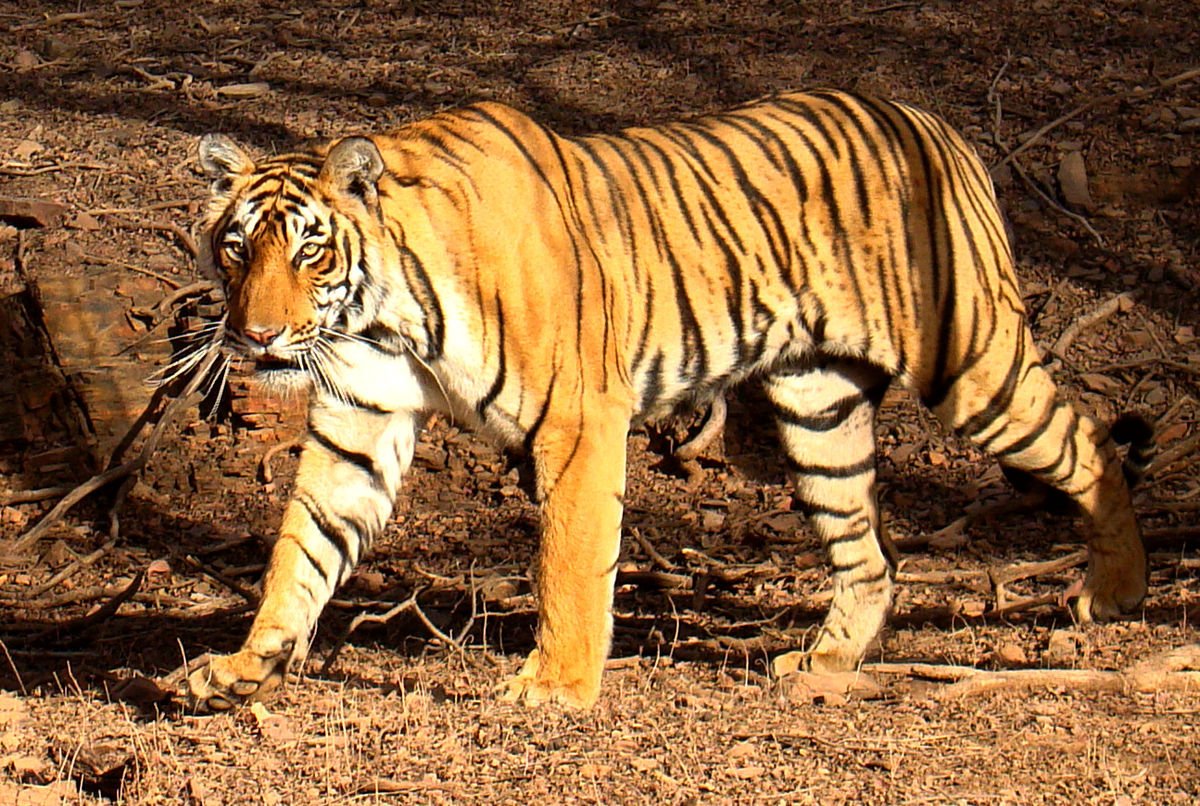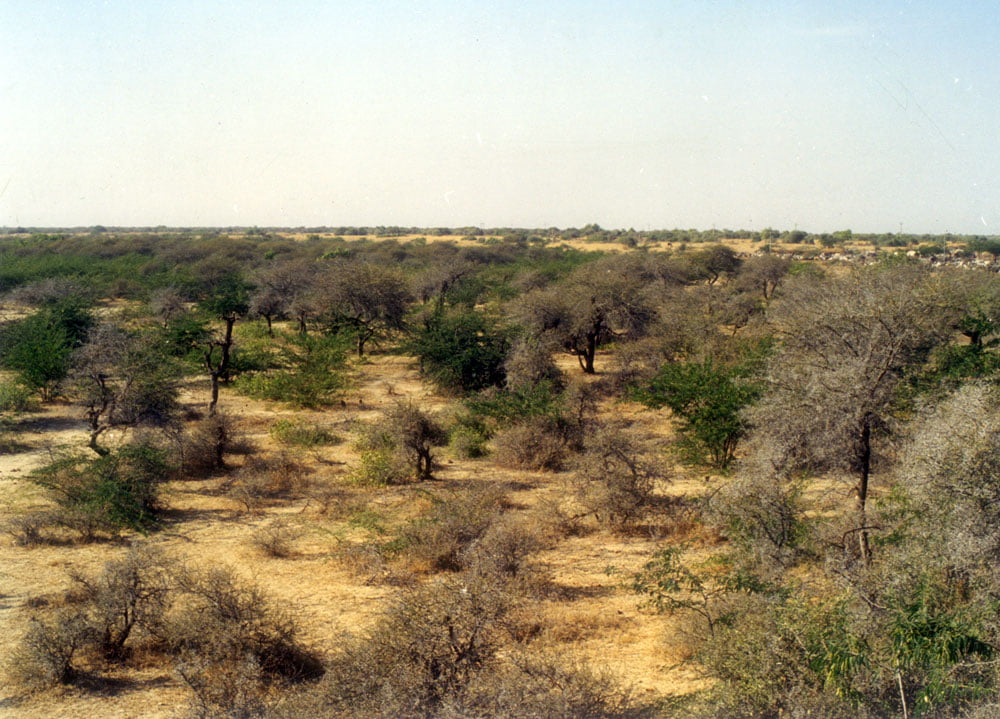One question that you might ask when you look at a tiger is: how can the coat be good camouflage? The background colour is orange upon which there are dark, jagged stripes. The orange is quite bright and certainly not muted. It seems that evolution has gone wrong. Tigers are meant to live in jungles aren’t they? The jungle is green and lush. Orange against green is going to stand out; that’s the impression one gets.
Prey animals see orange as a dull green
Well, the first point to make is that some of the larger animals which the tiger preys upon are partly colour blind. The orange background colour is believed to look like a dull green to deer and hoofed animals which means that the coat is excellent camouflage. Even to those animals that can see the orange it is still good camouflage, I would argue, for the reasons stated below.
Habitat and Behavior
The tiger doesn’t just live in lush green jungles. The tiger lives in a great variety of habitats such as monsoonal forests, coniferous woodlands, shrub oak and birch woodlands. The tiger also lives in mangrove swamps and tallgrass jungles.
Above are a bundle of photographs of some of these types of habitat and you can see right away that the coat of the tiger fits in quite nicely. This is especially so when we consider that:
The habitat can be quite burnt and brown and therefore the colour is not a lush green but something approaching orange. The dark stripes break up the tiger’s outline (disruptive colouration).
And the tiger hunts during the day or night but in general the tiger’s activity patterns, today, in certain parts of its range have become nocturnal. In the Kanha National Park India, for example, tigers are mostly active at night and they rest from mid-morning to mid-afternoon.
In the hot season, when daytime temperatures are extremely high, tigers are frequently seem to rest from early morning until late afternoon and therefore they are active at dawn and at dusk and at night.
The quality of sunlight at the time the tiger is active in many places throughout their range is warm, yellow and even red. This sharp, light grazing the landscape creates sharp, long dark shadows. You can see right away that we have a dappled and broken habitat in terms of its visual appearance which is quite orange in colour in the evening and in the morning when the tiger is active and quite possibly hunting.
A cat’s coat as a form of camouflage is most important when the cat is hunting to allow the cat to approach prey as close as possible thereby improving the chance of a successful hunt.
I think, therefore, that on analysis the tiger’s coat is not as strange as it first seems in terms of camouflage. In fact it is probably a very finely honed and tuned compromise covering a variety of environments and a range of lighting conditions.
In addition, it has to be stated that not all of the tiger’s coat is orange with dark black stripes. There is also quite a lot of white on the cat’s face and on the underside of the torso. It is quite common for wild cats in general to have white bellies.
We must not forget the Siberian tiger, by the way, which lives in birch forests in Siberia, in a very cold climate. The cat is often hunting in snowy conditions. Under these conditions an orange coat must stand out and this would appear to be a failure in evolution. However, there’s probably a misconception that Siberia is always covered in snow and extremely cold. This is not the case. Temperatures in summer can be warm and sometimes hot. The birch forests and woodlands have quite a similarity in general appearance to the flanks of the Siberian tiger. Once again I would argue that the camouflage from the Siberian tiger’s coat is quite appropriate.
P.S. A tiger’s coat is like our fingerprints: each one is unique. You can identify a tiger by her/his coat.









because its good camshaft